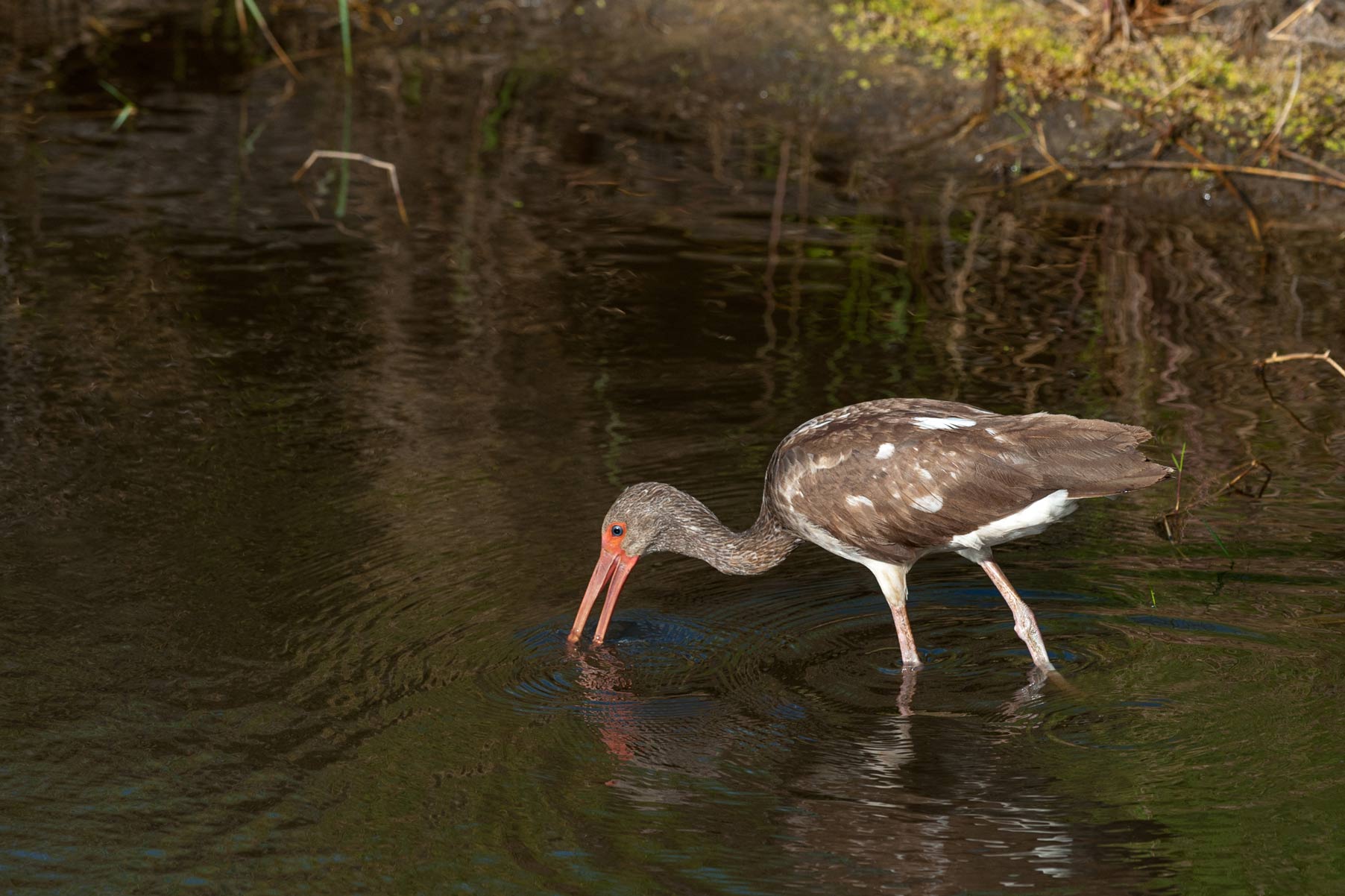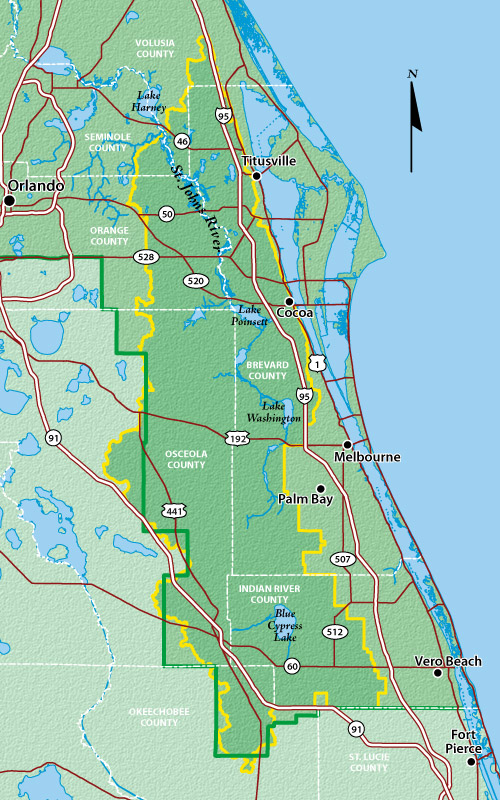Here’s what we’re doing in Okeechobee County
The work of the St. Johns River Water Management District is all about water. Our staff work each day on your behalf to protect water. This work is focused on four core missions: water supply, water quality, flood protection and natural systems enhancement and protection.
Okeechobee County is just one of the 18 counties where we do our work. Following is an overview of some of the ways that your tax dollars benefit not only the residents and visitors to the county, but also its natural and water resources.
Have you seen construction projects in your community or wonder where your water comes from? Chances are, the District issued a permit through its regulatory programs. The Consumptive Use Permitting Program reviews requests for water use and determines the amount of water available to be withdrawn from groundwater or surface water for uses such as public supply utilities, agricultural operations, commercial uses and power generation. Environmental Resource Permits authorize new construction in a way to prevent harm to water resources (such as causing adverse flooding), manage surface water and protect water quality, wetlands and other surface waters.
- Visit the interactive map dashboard to see what District permits have been issued in your county. Search by county, city or street address.
- Map-based GIS permit search tool (within the ePermit portal)
- Click here to search our ePemit portal for permits or applications.
- Overview of our permitting program.
Water supply planning and our regulatory and water conservation programs are examples of how we apply our water supply core mission each day.
- In Okeechobee County, a portion of your county is included in the Central Springs / East Coast Water Supply Plan, which identifies water supply challenges and water resource development projects to meet current and anticipated demands for water. Part of the county is also within the jurisdiction of the South Florida Water Management District.
- Watering restrictions help save water. Know your watering day.
- Florida Water Star program – Overview of building water efficiency into your home or business
- See map of “green homes” in Okeechobee County
Strategies to protect and restore water quality include a commitment to comprehensive monitoring to guide impairment determinations, manage restoration projects and evaluate effectiveness.
- What’s happening with the water in my area right now? See our continuous water quality monitoring portal.
- Surface water quality, searchable map of status and trends.
- Groundwater quality, searchable map of status and trends.
- Springs water quality, searchable map of status and trends.
Flood protection comes in many forms, such as water storage in natural wetlands and your neighborhood stormwater pond or flood control structures built in strategic locations.
- Water control structures. There are no flood control structures in the portion of Okeechobee County within the jurisdiction of the St. Johns District.
- Flooding in hurricanes or tropical storms. Here’s a list of local government contacts, state agencies and helpful website links for before, during or after a storm.
- Map of flood control areas in our District.
- Location of controlled water levels.
Natural systems benefit from lands the District has purchased for conservation and restoration. These lands are open for free for your enjoyment. On lands not owned by the District, natural systems benefit from effective permitting, water quality improvement projects, minimum flows and levels and cost-share projects.
The District does not own or manage any of the public lands in Okeechobee County. Recreational opportunities are available and can be found on the county’s website.
Prescribed fire helps maintain fire-dependent public lands.
Public lands help protect Florida’s endangered plants and animals.
Minimum flows and levels balance people’s and nature’s needs. The District does not have any MFLs within the portion of Okeechobee County in the District’s boundaries.
See the MFLs priority systems map.
Learn more about MFLs.
The District constructs large, regional projects that often benefit multiple counties and benefit more than one of the District’s core missions. Some of the projects in your county include:
Upper St. Johns River Basin Project — The Upper St. Johns River Basin extends from the headwaters of the St. Johns River in Indian River and Okeechobee counties to the confluence of the St. Johns and Econlockhatchee rivers in Seminole County. The upper basin covers 2,000 square miles, with the District’s project area covering 247 square miles. One of the largest and most ambitious wetland restoration projects in the world, the District designed an innovative plan with the U.S. Army Corps of Engineers to revitalize the river’s flow by restoring drained marshlands, plugging canals and building reservoirs. The District acquired real estate at fair market value. The Army Corps performed the engineering design and managed the construction of the project. With the project now completed and in long-term maintenance, the District operates and maintains the entire project. Benefits of the project include flood water storage, wildlife habitat and recreation. In addition, Canal 54 is no longer directly connected to the St. Johns River, but instead serves only as an emergency overflow for the St. Johns Water Management Area during extreme flood events. Water from nearby citrus groves and livestock pastures is now discharged into large reservoirs called water management areas, which keep agricultural runoff isolated from water that recharges the marsh. This runoff water can be reused for farm irrigation and freeze protection. The District has been recognized for accomplishments in this complex project including:
- In August 2016, the Florida Engineering Society lauded the Upper Basin Project as a “Project of the Century,” presenting project engineers with an excellence in engineering award. This was the second major award to recognize this project.
- An Australian river advocacy organization awarded the International Thiess (pronounced TEASE) River Prize to the District in October 2008 in recognition of the Upper Basin Project, recognizing the project a modern model of floodplain management, balancing the needs of the river with people’s needs.
- The nonprofit group, Association of State Wetland Managers, in 2019 featured the project as one of the nation’s top wetland restoration projects.
The District collects a wealth of data that is used to make science-based decisions in all our work. This includes data on how much rain your county has received, the water levels in area lakes and rivers, the amount of nutrients in natural waterways, planning to address future water supply needs and much more.
- Has your area received rain? See the rainfall dashboard.
- Surface water levels near you.
- Hydrologic data, interactive map.
The Blue School Grant Program provides funding to teachers within the District in support of their efforts to engage students in understanding and appreciating Florida’s freshwater and estuarine systems.
No teachers from Okeechobee County have participated in the Blue School Grant Program.
Encourage your child’s teacher to apply for a grant.
Contact us about a speaker for your group. We’d love the opportunity to speak with you about our work. Speaker’s bureau.
Free materials you can read or download at home or school.
Staff in our Governmental Affairs Program provide water resource information, assistance and support to federal, state and local elected officials and their staffs, and collaborate on water resource issues, programs and projects. One of the ways you may have met team members is during the annual Water Conservation Month observance when your local governments approved proclamations recognizing the observance.



